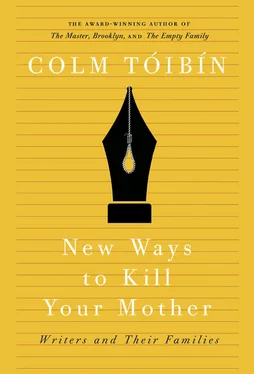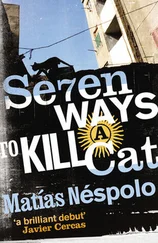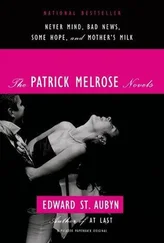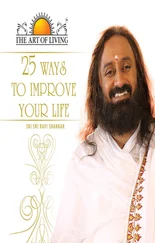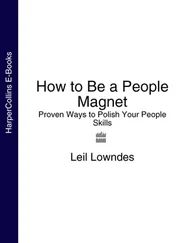He worked on some of the earlier as well as the later sections, including ‘Atlantis’. He wrote to a friend in New York: ‘I’ve been having a great time reading Atlantis in America , the last book out on the subject, and full of exciting suggestions. Putting it back for 40 or 50 thousand years, it’s easy to believe that a continent existed in mid-Atlantic waters and that the Antilles and West Indies are but salient peaks of its surface.’
In August 1926 he wrote to Waldo Frank: ‘I have never been able to live completely in my work before. Now it is to learn a great deal. To handle the beautiful skeins of this myth of America — to realize suddenly, as I seem to, how much of the past is living under only slightly altered forms, even in machinery and such-like, is extremely exciting.’
He sent the sections of The Bridge as he finished them to editors and friends. On 22 July he sent Marianne Moore his poem ‘To Brooklyn Bridge’ for The Dial (which she accepted); it would be the prologue for his long poem. Two days later he wrote to Waldo Frank: ‘That little prelude, by the way, I think to be almost the best thing I’ve ever written, something steady and uncompromising about it.’ Its last two stanzas read:
Under thy shadow by the piers I waited;
Only in darkness is thy shadow clear.
The City’s fiery parcels all undone,
Already snow submerges an iron year…
O Sleepless as the river under thee,
Vaulting the sea, the prairies’ dreaming sod,
Unto us lowliest sometime sweep, descend
And of the curveship lend a myth to God.
Crane was well aware that an epic poem could not be written in America in the 1920s. Such a poem would, he knew, because of its very ambition, be doomed to failure or something close to failure. This idea seemed, most of the time, to excite him. He was, it is important to remember, a poet in his twenties. At times he saw that the symbols would not carry the weight he gave them. ‘The bridge,’ he wrote to Waldo Frank in June 1926, ‘as a symbol today has no significance beyond an economical approach to shorter hours, quicker lunches, behaviorism and toothpicks.’
But in other letters, including ones to Frank, and especially one written fifteen months later to his patron Otto Kahn that set out the grand design of the poem, he seemed to feel no doubt about the importance of his project. ‘ The Aeneid was not written in two years,’ he wrote to Kahn, ‘nor in four, and in more than one sense I feel justified in comparing the historic and cultural scope of The Bridge to that great work. It is at least a symphony with an epic theme, and a work of considerable profundity and inspiration.’
Like many young poets, he wrote home once his first book had appeared wondering what they would make of it. He wrote to his mother: ‘I’m very much amused at what you say about the interest in my book out there in Cleveland. Wait until they see it, and try to read it! I may be wrong, but I think they will eventually express considerable consternation.’
His father was not impressed. As late as 1928, when The Bridge was almost finished, he suggested that his son learn a trade. But Crane was still adding to his store, discovering, for example, Gerard Manley Hopkins early in 1928. ‘It is a revelation to me — of unrealized possibilities,’ he wrote to Yvor Winters, who seemed to admire his work, and with whom he had a fascinating correspondence until Winters reviewed The Bridge harshly, thus ending what had been a close literary friendship.
Crane seemed to derive energy and immense pleasure from travel. His letters from France and Mexico are filled with delight, even though it is clear that he was drinking a great deal in Mexico. It was there in 1932 that he broke rank, as he put it, with the ‘brotherhood’, and began an affair with Peggy Cowley, who was in the midst of a divorce from Malcolm Cowley. ‘I think it has done me considerable good,’ he wrote. ‘The old beauty still claims me, however, and my eyes roam as much as ever. I doubt if I’ll ever change very fundamentally.’
Once The Bridge was finished and published, Crane continued working on a number of shorter poems, including ‘The Broken Tower’:
The bell-rope that gathers God at dawn
Dispatches me as though I dropped down the knell
Of a spent day — to wander the cathedral lawn
From pit to crucifix, feet chill on steps from hell.
In Mexico he had been on a Guggenheim fellowship that ended on 31 March 1932, when he said to a friend, ‘I’m just plain Hart Crane again.’ He was unsure whether he wanted to remain in Mexico or return to the United States. The problem, as before, was money, and this problem now became more severe when he learned that his inheritance from his father’s estate would be much less than he had expected, not enough to live on. His stepmother wrote to him on 12 April:
Nothing can be paid from the estate account to you in the way of your bequest… and there isn’t any income from stocks to speak of. We are not making any money from our different businesses. The only thing we can do is to give you an allowance from my salary each month, and that I have made arrangements to do.
Crane was drinking wildly and behaving erratically but still spoke of plans for future work. It was clear because of the freedom he had won during his travels and his high ambition as a poet and also because of his constant drinking that he was in no state to go back to New York and work again in advertising, or make his living in any way. He spoke of suicide and, it was reported, made a number of wills. Eventually, it was decided that he and Peggy Cowley would sail back to the United States on the Orizaba from Veracruz. After a stop in Havana, it seems that Crane was badly beaten up on the ship in the early hours of 27 April. One of his fellow passengers, Gertrude Berg, saw that ‘he had a black eye and looked generally battered’.
Close to noon that day he appeared on deck. ‘He walked to the railing,’ Berg remembered,
took off his coat, folded it neatly over the railing (not dropping it on deck), placed both hands on the railing, raised himself on his toes, and then dropped back again. We all fell silent and watched him, wondering what in the world he was up to. Then, suddenly, he vaulted over the railing and jumped into the sea… Just once I saw Crane, swimming strongly, but never again.
Although lifeboats were lowered, there were no further sightings of the poet. One of the most brilliant first acts in American literature had come to an end.
Tennessee Williams and the Ghost of Rose
Although Henry James’s sister, Alice, was five years his junior, they were the closest among the five James siblings. In her biography of Alice James, Jean Strouse has written:
Alice and Henry shared throughout their lives a deeper intellectual and spiritual kinship than either felt with any other member of the family. Within the family group the second son and only daughter were more isolated than any of the others… What bound Henry and Alice together was a… profound mutual understanding. Henry had withdrawn early from the competitive masculine fray to a safe inner world.
As a way of escape Henry James found his ‘safe inner world’ through reading and writing; this was not available in the same way to Alice. Henry created a vast imaginative terrain that he inhabited with considerable determination, independence and strength of will; his only sister, on the other hand, became a reverse image of him — she was a weak patient, dependent on others, suffering from ailments not easy to name and impossible to cure. Henry James did not keep a personal diary and nowhere set down his dreams and fears, but it is clear from his letters about her, especially when she arrived in England in 1884 and after her death eight years later, that Alice’s fate and her suffering preoccupied him a great deal while he also worked hard and managed a varied and busy social life.
Читать дальше
